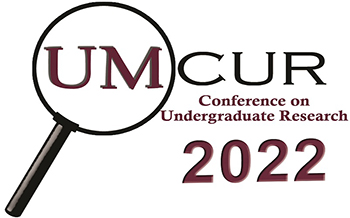Project Type
Presentation
Faculty Mentor’s Full Name
Cara Nelson
Faculty Mentor’s Department
Ecosystem and Conservation Science
Abstract / Artist's Statement
Although wildfire is a natural process in fire-adapted forests, it poses growing socioeconomic and health threats. Urban development and expansion into the wildland-urban interface (WUI) has heightened wildfire exposure, putting thousands of homes at risk in Montana alone.The Firewise USA program was created in an effort to reduce the risk of home ignition and loss in the WUI. The program encourages homeowners within WUI communities to engage in mitigation efforts such as using Firewise landscaping strategies to create a defensible zone around their homes and promotes the use of building materials that decrease overall ignition risk. Despite a growing body of literature about the effectiveness of Firewise mitigation strategies, there is a lack of knowledge about the best methods for educating homeowners; additionally, the factors preventing homeowner adoption of these behaviors are not well understood in the West. We are proposing to assess homeowners’ knowledge and usage of Firewise strategies, as well as evaluating whether knowledge and behaviors vary by demographic (age, income level, education, residence status, and previous experience of a fire event) through a social survey administered to homeowners in five neighborhoods located in the WUI in Missoula County, Montana. In addition to questions about knowledge and behaviors, it will include questions related to preferred methods of receiving information and education on Firewise strategies. Our findings can contribute to development of Firewise education and awareness programs in Missoula County, as well as creating a broader Firewise education in WUI communities across the country.
Category
Social Sciences
Firewise Landscaping: Homeowner Knowledge, Behaviors and Educational Preferences
UC 331
Although wildfire is a natural process in fire-adapted forests, it poses growing socioeconomic and health threats. Urban development and expansion into the wildland-urban interface (WUI) has heightened wildfire exposure, putting thousands of homes at risk in Montana alone.The Firewise USA program was created in an effort to reduce the risk of home ignition and loss in the WUI. The program encourages homeowners within WUI communities to engage in mitigation efforts such as using Firewise landscaping strategies to create a defensible zone around their homes and promotes the use of building materials that decrease overall ignition risk. Despite a growing body of literature about the effectiveness of Firewise mitigation strategies, there is a lack of knowledge about the best methods for educating homeowners; additionally, the factors preventing homeowner adoption of these behaviors are not well understood in the West. We are proposing to assess homeowners’ knowledge and usage of Firewise strategies, as well as evaluating whether knowledge and behaviors vary by demographic (age, income level, education, residence status, and previous experience of a fire event) through a social survey administered to homeowners in five neighborhoods located in the WUI in Missoula County, Montana. In addition to questions about knowledge and behaviors, it will include questions related to preferred methods of receiving information and education on Firewise strategies. Our findings can contribute to development of Firewise education and awareness programs in Missoula County, as well as creating a broader Firewise education in WUI communities across the country.
